How To Photograph Reflections In Water
One of my favourite things to do when I travel is to go on a quest to find a body of water that has a reflection of a landmark.
Photographing a reflection creates a unique image of an often photographed subject by adding interest and depth to your photograph.
The next time you travel add these to your shot list and come home with a set of dynamic images to show off your trip.
City Lights at Twilight
When the sky is that cobalt blue colour before night arrives, and lights from nearby buildings reflect off the water, magic happens.
Take this example of a waterfront hotel on a summer evening when the marina in the foreground was full of boats. Just after sunset the coloured lights on the exterior of the hotel reflected off the cobalt blue water making a very energetic image.
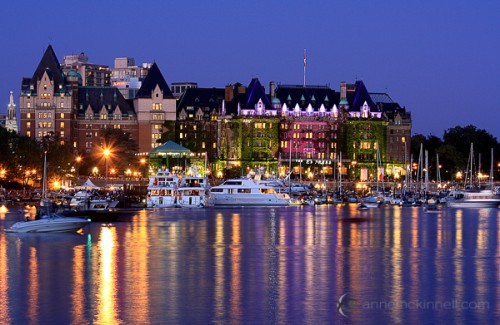
Calm Lake in the Morning
When you get up early in the morning water on a lake will often be flat calm making a perfect reflection. Capturing a perfect reflection is harder than it sounds because any amount of wind at all will cause ripples and blur the surface of the water.
If you can find a lake in the mountains there will be a better chance of finding still waters in the morning. Your shot will be even better if the morning’s first rays light up the peaks of the mountain which is reflected in the lake.
When you scout your location, take a compass so you can find a subject in the west that will light up when the sun rises. Then put some water between you and that subject and you have the ingredients for a great shot.
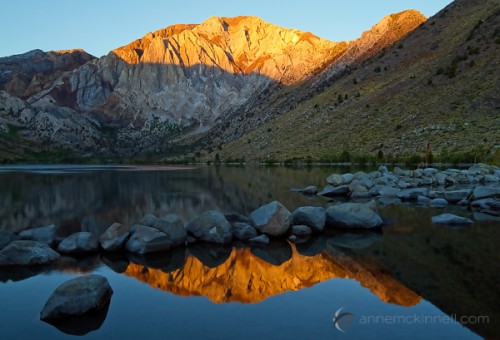
The calm lake shot is a good opportunity to break the rule of thirds and go for perfect symmetry in your image. Put the horizon line in the middle of the frame and include the same amount of subject and reflection.
You want to avoid direct light on the water because that causes glare. The best situation is when you have a colourful object that is has direct light on it and that subject is reflected in water which is in the shade. Then the reflection will contain saturated colours and no glare.
Not So Calm Lake
Ripples in the water are not necessarily bad. It just produces a different effect. You can get this effect by waiting for the wind to come up a little or just by using a longer exposure which allows time for the water to move while the shutter is open. Either way it will create a more abstract feel by adding texture to the water.
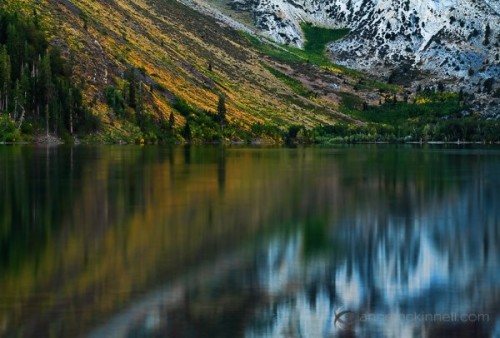
The Ocean at Sunrise or Sunset
Obviously you will not get a perfect reflection when you photograph the ocean because the water is always moving. But it will still reflect the colour of the sky and if you get a sunrise or sunset with great colour you can multiply that effect by including the reflected light in your composition.
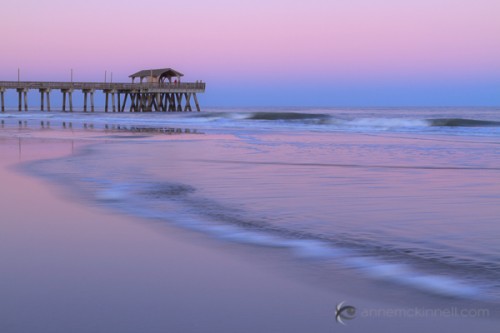
Birds
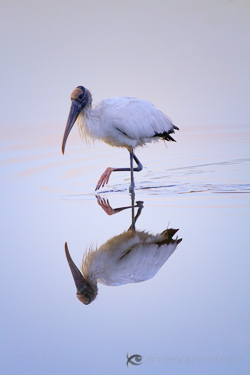
I love capturing perfect bird reflections. They can be hard to pull off because you need a number of things to come together to make the image work.
First, there can be no wind at all.
Second, you need great light (as always).
Third, you need a bird (ok that was pretty obvious but easier said than done).
To make this image of a woodstork I had to go back to the location before sunrise three mornings in a row before I got still water. Then I had to find a position first, remain very still, and hope a bird would come. If the bird is there first, and you try to approach, it doesn’t usually work out.
I like images where the bird is moving a bit so there are little ripples around its legs that define the surface of the water.
Reeds
Look for reeds or other grasses sticking out of the water that can make a great abstract image. If it were not for the lilly pads in this image, it might be hard to tell where the surface of the water is.
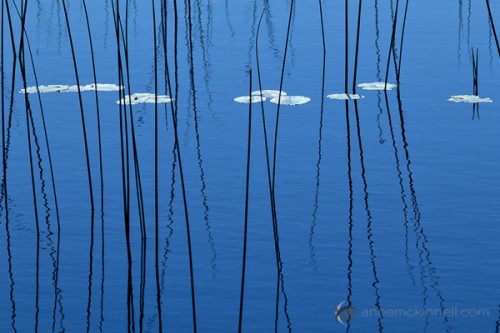
Just the Reflection
The subject receiving the direct light does not necessarily need to be in the frame. Interesting compositions can be found if you leave the main subject out of the frame and only include the reflection in the shot.
In this image of Half Dome in Yosemite National Park, the direct light falling on the dome was very harsh so I decided to leave it out of the frame and only include the reflection to create a more abstract impressionist feel.
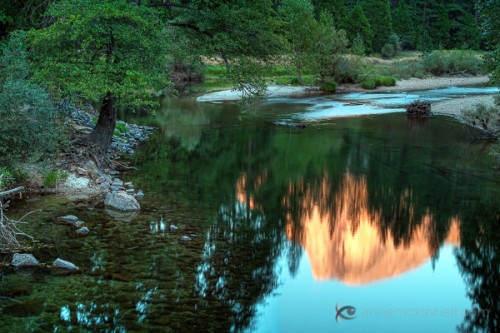
To go even more abstract, find reflections of colourful subjects in rippled water. Don’t worry if you cannot identify what the main subject is.
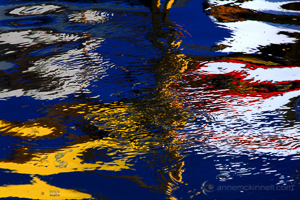
This image is reflections from a stack of kayaks on a dock at a marina. The ripples are caused by fish swimming under the surface.
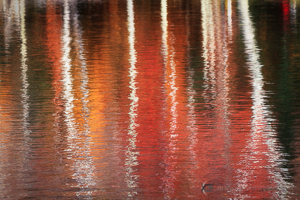
This image was made in New Hampshire during the very colourful display of fall foliage.
It was a windy day, so photographing the trees wasn’t working out very well. I decided to go for the abstract look by photographing the reflection of the trees in the water which was rippled from the high winds.
Tips
Remember your choices: the subject and its reflection; just the reflection; still water; and blurred water.
Direct light on water creates glare – you want the direct light to fall on your subject which is then reflected in water which is in the shade. If there is glare, you can use a polarizing filter to reduce or even remove it.
Try using a graduated neutral density filter. Usually the reflection is a couple of stops darker than the main subject so you can use a graduated neutral density filter to even things out. If you don’t’ have one, you can always try the digital equivalent in Lightroom or Photoshop. But remember the reflection part of the image should still be slightly darker. If you make it as bright as the main subject the image will not look right.



.gif)





